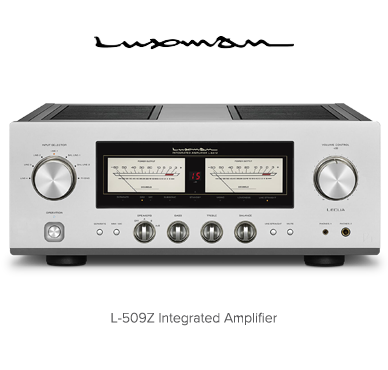Studio-Quality Purity, Precision, and Clarity: Mark Levinson № 523 Preamplifier Features Pure Path Circuit Design, Class A Pure Phono MM/MC Phono Preamp, and Reference Components
Mark Levinson's proprietary Pure Path discrete, direct-coupled, fully balanced, dual-mono signal path and Folded Cascode connections function as the anchors of the definitive-sounding № 523 preamplifier. If you've been seeking to hear music with the kind of purity and accuracy experienced in the recording studio and played back with undetectable coloration, № 523 awaits. It offers degrees of tonality, soundstaging, clarity, and imaging that inspire hyperbole but which must be experienced to be placed in proper perspective. Its host of connectivity and feature set give you all the customizability and options you'll need to hear every source like never before.
Achieving unrestricted purity and off-the-charts precision, this U.S.A.-made reference instrument's state-of-the-art components suite – including a discrete R-2R Ladder volume control, Class A Pure Phono MM/MC phono preamplifier, and Class A Main Drive headphone amplifier – features complex circuitry, leading-edge engineering, and military-grade build. Everything is hand-selected for a specific task, from the gain-stage JFETs to the tantalum nitride resistors and 6000-Series aircraft-aluminum chassis. It all explains why the objectives of many preamplifiers – high gain, low noise, wide bandwidth, hypnotic linearity – become reality with № 523. 100% Music Direct Guaranteed.
Pure Path Circuit Design: A Mark Levinson Exclusive
Since 1972, Mark Levinson has been dedicated to the uncompromising art of sound, guided by the principle of musical purity. To achieve that goal like never before, Mark Levinson engineers scoured company archives and developed a circuit-design philosophy called Pure Path. On a conceptual level, its hallmark principles include a discrete, direct-coupled, fully balanced, dual-monaural signal path that delivers unrestricted, uncompromising purity. Far from merely arranging high quality components in an intelligent manner, Pure Path represents the meeting of science and art – and both measured and subjective performance. Pure Path highlights in № 523 include Folded Cascodes, an R-2R Ladder volume control, Class A Pure Phono stage, and Class A Main Drive Headphone amplifier output.
Behold Analog Mastery: The Folded Cascode
Mark Levinson components are designed around a Pure Path amplifier circuit concept that makes heavy use of a circuit design element called a cascode. Originally created for improving the bandwidth of vacuum-tube circuits in radios, cascodes both improve bandwidth and enhance linearity. A cascode combines two transistors so that they operate as a single composite device that functions like a single transistor, using the wanted characteristics of each component transistor, and rejecting the unwanted characteristics. Mark Levinson engineers began their design of the preamp gain stage with pairs of JFETs (junction field-effect transistors) chosen for their low noise and high gain. JFETs achieve such characteristics by being large, and with their size comes nonlinear gain – or distortion. To mitigate this, BJTs (bipolar junction transistors) are added to the circuit. BJTs exhibit very low input impedance and very high output impedance, which translates to excellent bandwidth and linearity. By creating a cascode of the JFETs and BJTs, Levinson engineers created a design with the best characteristics of both sets of devices. The output of the cascode is then connected to another transistor of the opposite "gender." Current flows through it in the opposite direction to "turn around" the direction of the signal current. This special connection is called a Folded Cascode and a hallmark of the Pure Path circuit: High gain with low noise, wide bandwidth, and excellent linearity.
A Superior Solution to Volume Control: R-2R Ladder
The analog potentiometer – a device with a number of performance drawbacks – is the basis of many volume controls. For starters: The mechanical connection wears out, creating scratching or crackling noises. It is nearly impossible to manufacture an identically performing pair, and mismatches in a stereo pair can cause level imbalances between the two channel. And, due to their varied reaction to parasitic capacitances at different volume settings, the sound changes depending on where the volume is set. Rather than attempting to improve upon this flawed design, Mark Levinson engineers abandoned it and employed a complex circuit architecture called an R-2R Ladder. In the R-2R Ladder, a string of resistors with identical resistance (R) form the side of the ladder, with another set of resistors forming the rungs, all identically with double the resistance (2R). This unique circuit takes whatever current appears at its input and successively divides it in half at each "rung" of the ladder. Different combinations of "rung" currents can then be selected and added together, precisely delivering nearly any output current, and thereby, volume setting. The currents through the rungs are determined by fixed resistors, capable of very tight tolerances, able to be closely matched to one another in value. Analog switches "steer" the currents, are precision devices, and have no mechanical contacts to wear out. In short, the R-2R Ladder solves all the problems inherent to potentiometer-based volume controls.
Uncompromising Build: Military-Grade Components
All Mark Levinson equipment employs electronic components carefully chosen for their specific task. Gain-stage JFET pairs have high gain, low noise, and low distortion. And since they are encapsulated in the same package, the two devices operate under nearly identical conditions. Capacitors used in critical filtering locations are film types, noted for their consistent performance regardless of temperature and frequency. Finally, resistors in critical gain-setting and feedback locations use tantalum nitride thin-film elements. Tantalum nitride typically finds use in sensitive military equipment because it is unusually stable with respect to temperature, exhibits very low noise, and is unaffected by magnetic fields. In fine audio equipment, those characteristics make the sound more revealing and effortless, free of the low-level nonlinearities caused by lesser resistive materials as they heat and cool under dynamic conditions.
Pure Phono: Class A for a Classic Medium
Preamplifying from turntable to line level can a difficult task, and is an area where some equipment makers skimp on components and design. The № 523 preamplifier features Pure Phono, itself following Pure Path design principles including discrete design free of op amps. Pure Phono operates exclusively in Class A throughout, employing tantalum nitride thin-film resistors and polypropylene capacitors with punishingly low tolerances. Pure Phono also contains physically separated channels and balanced inputs for purity. In № 523, Pure Phono offers a fixed-gain MM section with five capacitive cartridge-loading settings, and an MC section with three gain settings and 10 resistive cartridge-loading settings. And an ultrasonic filter intelligently compensates for rumble and warping.
Loaded with Connectivity: Completing the Signal Path
№ 523 offers five line-level analog inputs: two balanced (XLR) and three single-ended (RCA) in addition to the Pure Phono (RCA with grounding pin) input. The preamplifier delivers its signal to balanced (XLR) and single-ended (RCA) stereo outputs, as well as a 1/4-inch (6.3mm) Main Drive Headphone output integrated into the front panel. The Main Drive Headphone amplifier circuit drives up to 32-ohm headphones in Class A by employing the main output circuit rather than a secondary signal path. A selectable fourth-order, 80Hz high-pass filter enables seamless integration of a single or dual subwoofers for full-range performance with a wide range of loudspeakers. System-integration connectivity includes Ethernet/IP control, RS-232, USB for monitoring and configuration via web page, plus 12V triggers and an IR input. An included machined metal remote delivers the robust feel and precise control befitting of a component of the preamplifier's caliber.
Why Mark Levinson
Few, if any, names are more synonymous with premium-level high-end audio as Mark Levinson. Unafraid to take spare-no-expenses approaches and unbowed in their pursuit of absolute purity, U.S.A.-made Mark Levinson products continually set new standards for the entire industry. Focusing on prestigious sound quality, time-defying longevity, and meticulous craftsmanship, every component wearing the Mark Levinson badge is at once a symbol of sonic excellence – and a sign you and your music have arrived at an exclusive destination.
- Pure Path discrete, direct-coupled, fully balanced, dual-monaural signal path
- Class A Main Drive Headphone output for up to 32-ohm headphones
- Discrete, balanced R-2R Ladder volume control for precision and performance
- Six analog line-level and phono inputs; balanced and single-ended outputs
- Class A Pure Phono stage with physically separated channels for MC and MM
- Selectable fourth-order, 80Hz high-pass filter for seamless subwoofer integration
- Designed and handcrafted in the U.S.A.
Line stage gain, normal gain setting: 13.5dB balanced; 7.5dB single-ended
Line stage frequency response, 20Hz to 20kHz: ±0.02dB
Line stage frequency response, 0.4Hz to 370kHz: +0.1 / -3dB
THD+N @ 1kHz (2VRMS single-ended or 4VRMS balanced output): <0.003%
Signal-to-noise ratio (ref. to 2VRMS single-ended or 4VRMS balanced, max vol): >115dB @ 1kHz
Crosstalk @ 1kHz: <-107dB
Channel separation: below noise floor (>115dB @ 1kHz)
Input impedance: >45kΩ
Output impedance: <80Ω single ended, <160Ω balanced
Maximum input level, normal gain setting: >10VRMS, single ended, >15VRMS, balanced
Maximum output level: >11VRMS single ended, >22VRMS balanced
Headphone output impedance: selectable; <3Ω or 75Ω
Headphone maximum output, low impedance setting:
30Ω (0.3W), 20 to 20kHz: <0.1% THD: >3VRMS
300Ω, 20Hz to 20kHz: <0.1% THD: >9VRMS
Headphone THD+N, 20Hz to 20kHz, 2V RMS: <0.03% @ 30Ω, <0.01% @ 300Ω
Phono stage: RIAA frequency response: 20Hz to 20kHz, ±0.3dB
Infrasonic filter: defeatable, 15Hz, 2nd order (12dB/octave)
Moving Magnet mode: Input resistance: 47kΩ
Input capacitance: selectable; 50, 100, 150, 200, or 680pF
Gain: 40dB @ 1kHz
THD+N, 20Hz to 20kHz, 2VRMS output: <0.03%
Moving Coil mode: Input resistance: selectable; 20, 33, 50, 66, 100, 200, 330, 500, 1000, or 47kΩ
Input capacitance: 50pF
Gain: selectable; 50, 60, or 70dB @ 1kHz
THD+N, 20Hz to 20kHz, 2VRMS output: <0.02%, 50 or 60dB settings, <0.04, 70db setting
Analog inputs: 2 balanced (XLR), 3 single-ended (RCA) line, 1 single-ended (RCA) phono w/ ground
Analog outputs: 1 balanced (XLR); 1 pair single-ended (RCA), 1 headphone (¼", 6.3mm TS)
Control connectors: Ethernet (RJ45), RS-232 (RJ12), Trigger In and Out, IR In, USB-A, Mini USB
Mains voltage: 100VAC, 115VAC, or 230VAC, factory set
Power consumption: 0.4W Green Standby, 5W Power Save, 67W Normal Standby, 70W On, idle
Dimensions (HWD): 3.75" x 17.25" x 18"
Weight: 39 lbs.
![]() User Manual (PDF, 4.7 MB)
User Manual (PDF, 4.7 MB)






































